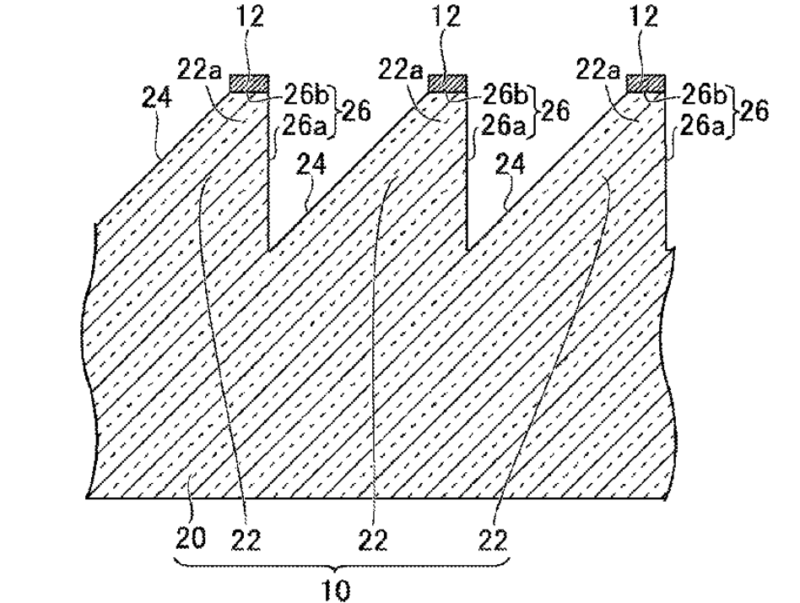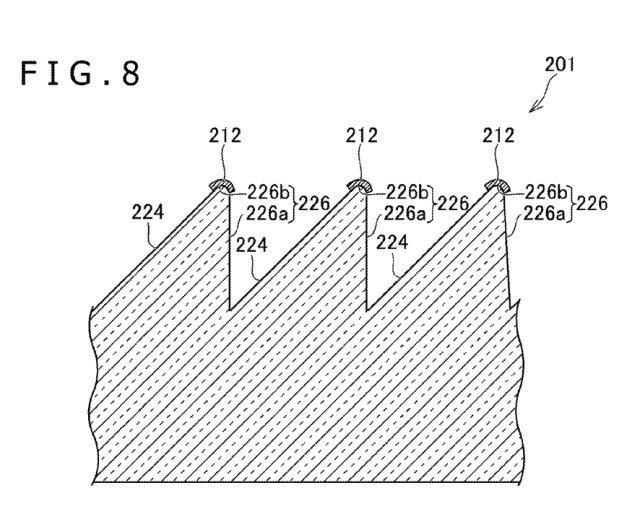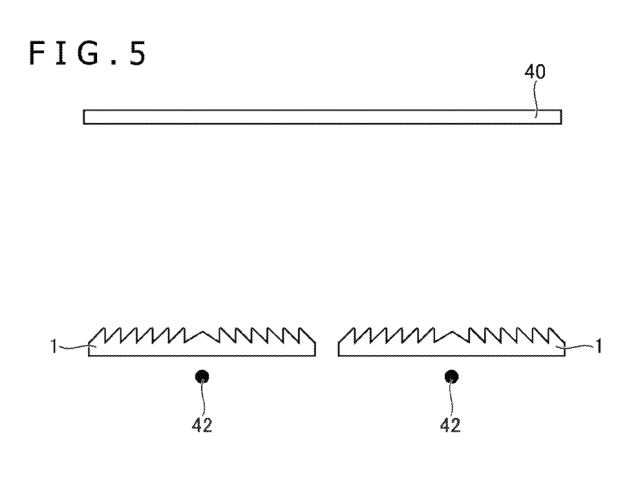

This lets Fresnel lenses operate at a much smaller focal length and with a thinner and lighter profile than a traditional lens, making them ideal for virtual reality headsets. But the downside is that the edges of those concentric grooves sometimes throw a ray of light sideways rather than focusing it, which can show up as a crepuscular ray when it hits your eye.

Sony avoided this problem in the original PlayStation VR by using traditional lenses in that headset's bulky drop-down visor, which floats in front of the user's eyes. For the upcoming PSVR2, though, Sony is transitioning to "a light, well-balanced Fresnel lens," according to an official product page that went up last week.
The fix
That announcement brings new salience to a Sony patent for "Fresnel lens and manufacturing method for Fresnel lens" (PDF). The patent was first filed in 2017 and issued by the USPTO in May of 2020 (and recently noticed by Road to VR). According to the filing, Sony's patented method for manufacturing the Fresnel lens "can suppress a flare which is generated in an image visually recognized through the Fresnel lens so as to extend toward a center of a lens." This would seemingly solve the crepuscular-ray problem for good.
The full patent goes into nitty-gritty detail about Fresnel optics and manufacturing methods. But the key to Sony's patent seems to be "a light-absorbing portion... in a position along the optical axis of the Fresnel lens which passes through the coupling surface."
Sony's method essentially flattens and covers the sharp "points" on the edges between a lens' concentric grooves with opaque material. This means "it is possible to suppress a flare which is generated due to the transmission of the light through the top portion." The patent describes a number of different manufacturing processes for applying this light-absorbing layer, which could work for circular or square Fresnel lenses, according to the patent.

While this patented method would seem like a no-brainer for Sony to use to set apart its next PSVR headset, we should keep in mind that a patent filing isn't the same as a product or feature announcement. The patent does specifically mention the lens's potential use in "a head-mounted display," suggesting Sony is at least considering VR applications for the lens.
The patent also doesn't make clear if covering up part of the lens in this manner has any effect on the clarity or apparent resolution of the image projected on the other side. The patent does suggest that the short distance between the eyes and the Fresnel lenses in a head-mounted display would mean that a user "does not mind about the presence of the light-absorbing portion."

Regardless, this patent gives us hope that we, as a species, may see the end of the crepuscular-ray scourge in our time. Dare to dream, folks. Dare to dream.
Listing image by Lee Hutchinson
reader comments
62